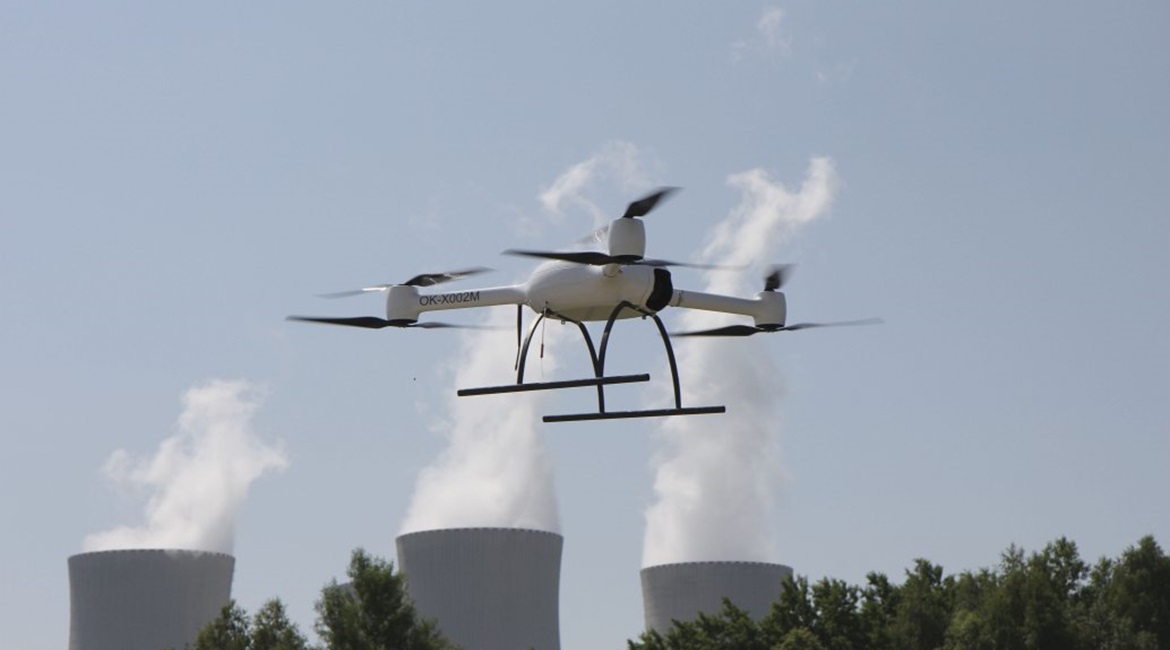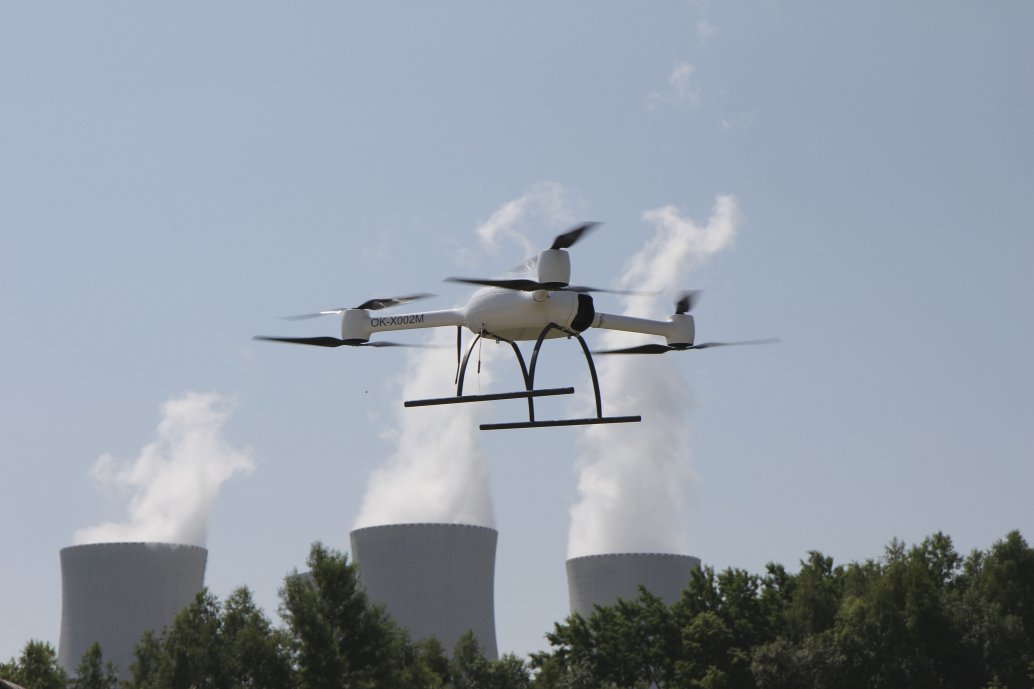
A joint research contract to build and demonstrate an unmanned aerial system (UAS) and hangar system under a broader project to enable satellite communications-enabled command of remote chemical, biological, nuclear, radiological, and explosive (CBRNe) operations awaits approval by the European Space Agency (ESA) and the European Defence Agency (EDA) in the coming months, according to European Union (EU) officials.

A prototype AUDROS UAS seen undergoing early trials. (VVU)
The project, known as Autonomous Drone Services in the CBRNe operations (AUDROS), combines CBRNe detection suites with various satellite communications (satcom)-enabled capabilities to offer a wide range of operational applications across military, civil security and industrial users, the officials said.
“The idea is to build a demonstrator that can be scaled up industrially for all those dual-use applications, but which also shows the value-added of integrated space services,” a source familiar with the matter told Jane’s on 2 April.
“Platforms of all kinds in the future will be linked to such services,” the source added.
The first phase of AUDROS ended in December 2018 and led to the construction of a proof-of-concept prototype system. This comprised a UAS equipped with lightweight radiation and gas detectors, as well as a portable hangar where the UAS could automatically recharge its battery.
The future beyond line-of-sight (BLOS) AUDROS demonstrator will expand the prototype’s technical design in several ways. For example, it would enable a UAS to either recharge or swap its battery for a fresh one, meaning that a fleet of UASs and/or an array of hangars could enable 24/7 operations. It will also incorporate payloads for mapping and visual day and night detection of persons, as well as situational awareness from integrated satellite services.
Looking to read the full article?
Gain unlimited access to Janes news and more...


